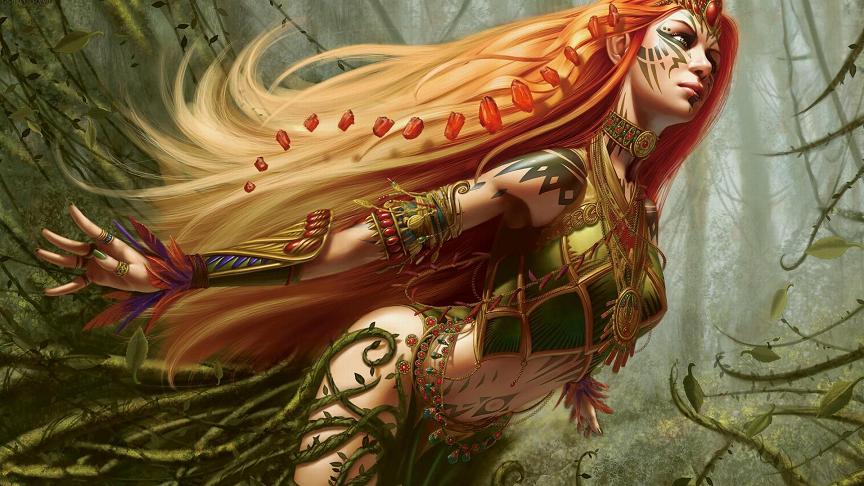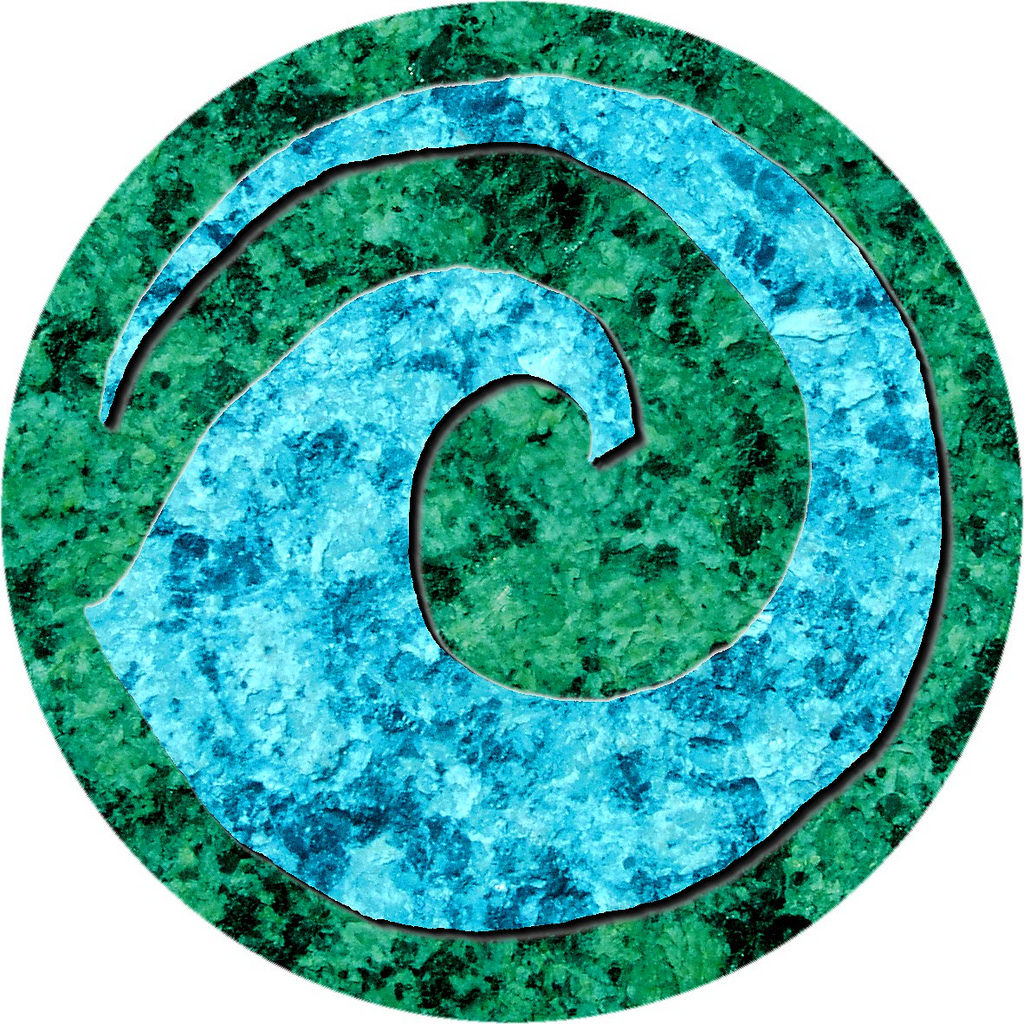Melora
One of the native Deities of Rendära-düh, whose cult has suffered more changes than most others with the passage of the ages. Currently worshipped as the Master of Waves and Tides, the Matron of Water, the Lady of the Rivers and Wilds, the Lady Protector of Nature and the Wilderness and theGuardian of Life
Depictions:
Older Records
Native Roots
The first depictions of Melora can only be found in ancient tomes, written in long-forgotten dialects, or near-unrecognizable shrines found in the ruins of the most desolate, long-abandoned villages.
It is believed that the current image of Melora is derived from the mixing of two diferent ancient native deities and one foreign deity, brought by the Eladrin. The most knowledgeable scholars in theology across Rendära-düh defend that these separate cults have naturally melded into one with the passage of time and mixing of ideas between the local kingdoms..
In most native depictions, Melora is depicted as a male deity, although its representation varies between that of a man associated with nature and the wild, occasionally depicted with its head ornamented by a pair of stag antlers or horns from another animal; and that of a man associated with the rivers and sea, frequently represented commanding the tides. None of these two deities are known by their original name and most examples of their original depictions have long since been "appropriated" by varied interested parties across the continent.
Foreign Roots
From all the three deities believed to have influenced the current depictions of Melora, the most well known comes from outside Rendära-düh. The cult of this foreign deity supposedly entered the continent with the arrival of the Eladrin near the region where currently stands the city of Fyr-Elfhafen. Most of what is known from this deity comes either from what has been observed in the various Eladrin tombs and ruins spread across the continent, or from isolated sources claiming to have established direct contact with this civilization. The original name of this deity is, however, never mentioned. All records indicate that this deity was referred to by female pronouns, although the nuances to their use in writing or direct conversation are unknown to renowned scholars in Rendära-düh.
All depictions of this foreign deity are unmistakably female, clearly represented with associations to nature and wilderness. Often accompanied by animals or surrounded by trees, flowers and roots, this divine deity was often depicted with a rather gigantic stature, something which as partially transferred to the current cult of Melora, also usually depicted as a large physical identity. It is believed this foreign deity mirrored the native male deity associated with nature, and ended up overshadowing itas the Eladrin traveled though the continent, influencing the local cults.
Current Depictions
Most of Melora's representations in the current times share the same traits, after the melding of the ideals that comprised her several roots. Melora is depicted as an adult woman, sometimes young, others elderly, normally surrounded by a combination of waves, trees or roots and wild animals. It is not unusual to find statues showing her with very long hair, usually melding into the carved shapes of water or vines near its bases, as if to allude to that these elements are part of her physical form. Her personality, however retains the aspect of nature, as she is equally depicted as a gentle motherly being or as a vindictive angry force of destruction.
The Cult:
Achitecture and Locations
Places of cult for Melora were usually built near rivers or the coast whenever practically feasible, although some more remote shrines have been found in the depths of forests. The altar in each location was usually placed so that any individual facing it would also be facing either the closest shore, the flow of a nearby river, or the center of a forest, depending on the shrine's location.
Regardless of how ornamented or rustic the place of cult was, Melora's dedicated shrines are usually seen surrounded with references to her divine domains. Some are built with ancient living trees being part of the walls, while others are ornamented with small internal fountains and waterfalls to guarantee the sound of the liquid splashing echoes throughout the shrine. Most are decorated with a heavy theme of wood and water, presenting occasional statues and sculptures of animals, especially in shrines located further away from the sea.Engravings of waves , on the other hand, are frequently included in most walls or altars, being an easy symbol to include in the architectural style, making them a favorite among the involved artists.
Champions
The only known example of a champion for Melora is [Placeholder] Eladrin King, mostly known for being the King of the Eladrin, who led their expedition across The Abyssal Current.
Ideals and Tenets
The basic tenets in the cult of Melora were initially pragmatically in favor of the chaos of the sea and wilderness, and opposed to the order and systematization of civilization. Although some of these principles remained in use in the most remote regions revering Melora, most of the small villages and towns who kept worshiping this deity until afterwards they became large cities eventually dropped these ideals with time, retaining only the worship for the more simplistic natural elements of water and the wild.
Holidays
- Day of Water: Also called Day of the Sea or Day of the River, depending on the region, it is a day of worship to nearby large bodies of water, as sources of sustenance. In coastal cities which depend mostly on the sea for food, this holiday is particularly important, and citizens spend the day performing cultural activites in appreciation for the bounties of the ocean. A special variation of this day occurs in Fyr-Elfhafen, where [PH] Eladrin King, named as the champion of Melora, is also celebrated as a mystical figure whose deeds are included in this holiday. The local citizens consider this a historical holiday just as much as a religious one, performing sea-related competitions in honor of the Eladrin's accomplished such as ship racing or fishing competitions.
- Blessings of the Tides: A holiday with no fixed date, this celebration occurs the day after a proxigean spring tide hits the coast, or even during the very same day, if nearby mage or oracles manage to predict it. Followers of Melora pray for her mercy, in hopes that the city is is spared from destruction in the following times. Some rumors indicate that the destruction of the capital of the Cult to Melora, Fyr-Elfhafen, happened not long after a proxigean spring tide in which the Great Temple of Melora failed to respond with appropriate pleading ceremonies.
- Awakening of Melora: The beggining of Spring, celebrated with the obligatory plantation of new trees. As a deity of Nature and wilderness, Melora casts blessings upon those who help expand her realm. This date is usually celebrated with the replanting of trees in nearby forests.This custom became a very important tradition in Fyr-Elfhafen, where a big expedition of citizens depart the city every year in the winter so as to reach Blackwood at the start of Spring, where they depart to the edge of The Mourning Woods in order to replant entire hills with new trees. This tradition was named The Mourning Return. Alongside the planting of trees, it is customary for hunters who worship this goddess to adopt their new pets in these festivites, as to grant them a divine blessing. This last custom spread to the general population where Melora is seen as a major deity.
- Inauguration of the Great Temple: Very specific to Fyr-Elfhafen, this holiday is celebrated mainly by the wealthiest citizens of this coastal city, becoming a large yearly event after the construction of the Great Temple of Melora. The fact that this holiday seems to contradict the tenets of Melora is lost within this population.
Funeral Ceremonies
Most of the followers of the Lady of the Wild bury their deceased inside forests or where new trees are to be replanted, as to feed the growth of Melora's realm with the flesh of its followers. It is thought that Melora does not condemn her followers who cut down trees, as long as these trees grew over the corpses of her followers' family.
Alternative Names
- The Sea Mother
- The Lady of the Sea
- The Lady of the Wild
Divine Classification
Deity
Species
Children
The crest associated with Melora. Formally depicted in tones of blue or green, it is normal to see a commoner wearing this symbol in any ornament made simply from wood, considered more appropriate than using metal, even if less durable.
Remove these ads. Join the Worldbuilders Guild










Comments